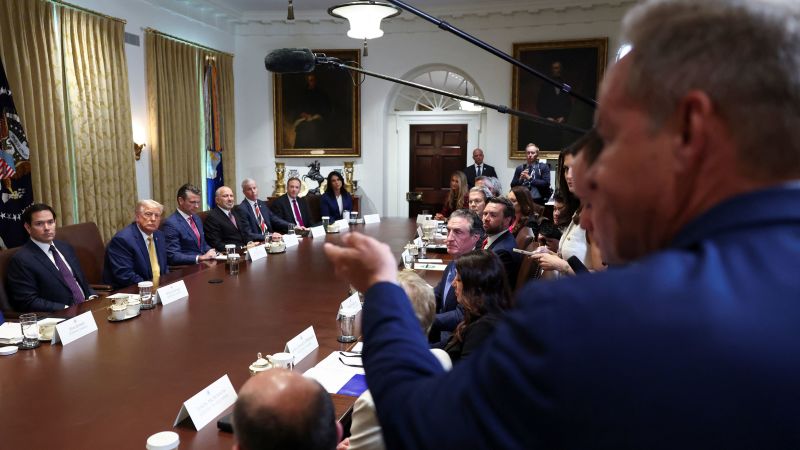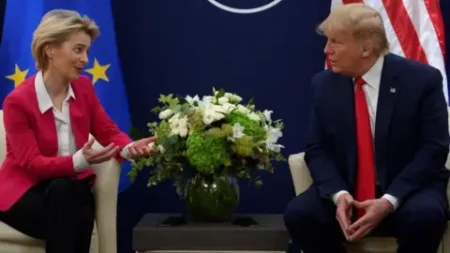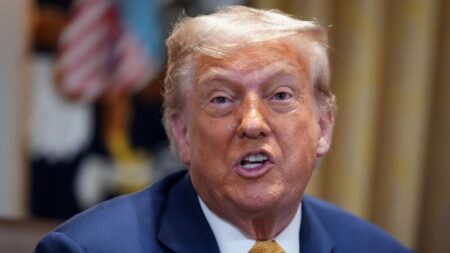In a recent development that has raised significant alarms both in domestic and international markets, President Donald Trump announced that at least seven countries would receive tariff letters as part of his administration’s ongoing negotiations related to international trade. This announcement, made via his social media platform Truth Social, revealed plans for immediate tariff implementations, with expectations that these measures will be sent out as early as Wednesday morning. As part of his trade strategy, Trump emphasized a firm deadline, stating unequivocally that an August 1 implementation date would not be extended for further negotiations, thus placing pressure on affected nations to strike favorable deals before this cut-off.
The necessity for these tariffs stems from Trump’s assertion of a 10% levy on imports originating from the BRICS nations, which consist of Brazil, Russia, India, China, and South Africa. Additionally, he outlined plans for a staggering 50% tariff on copper imports and threatened an alarming 200% import tax on pharmaceuticals. Such sweeping measures have introduced a wave of uncertainty into the global economy, which has already been on shaky ground due to prior fluctuations in market stability that have confused investors and analysts alike.
In detail, Trump indicated that “a minimum of seven” tariff notifications would be dispatched as soon as Wednesday morning, with the potential for sending out an additional set of letters to other countries throughout the day. Commerce Secretary Howard Lutnick, speaking with CNBC, noted that the total number of letters would likely range between 15 to 20. This move follows Monday’s issuance of the first batch of tariff letters directed at 14 countries, including notable partners such as Japan, South Korea, and South Africa, maintaining rates similar to those initially disclosed back in April.
In threading the political narrative, Trump’s insistence on a firm deadline for tariff payments conveys a resolute shift in his stance. Earlier statements portrayed the August 1 date as “firm but not 100% firm,” leading to expectations for a potential extension. Conversely, Trump asserted, “All money will be due and payable starting AUGUST 1, 2025 – No extensions will be granted,” which can be interpreted as a strategic leverage against trade partners that might be stalling negotiations.
The international response thus far has been somewhat muted compared to the turmoil sparked by Trump’s previous tariff announcements that aimed at numerous trading partners starting from April. As negotiations progress, only a handful of agreements have been solidified; namely, the United Kingdom and Vietnam have reached framework agreements with the U.S., while China has secured a temporary truce extending until August 12.
At his recent cabinet meeting, Trump hinted at sending a letter regarding tariffs to the European Union, even as trade talks over the weekend appeared to make progress. He expressed optimism, stating, “A letter means a deal,” while also noting the bloc’s evolving treatment of U.S. interests, albeit with grievances about fines and suits against American technology firms. European Commission President Ursula von der Leyen indicated through social media that they were collaborating in “good faith” with the Trump administration to secure a bilateral agreement.
Trump also reiterated his intention to address the BRICS cohort with an imposed 10% tariff, emphasizing that adherence to the BRICS grouping would incite tariffs due to its perceived threat against U.S. economic hegemony. This perspective is grounded in the belief that BRICS was established to undermine the U.S. dollar’s dominance globally. The concept of a unified BRICS currency was briefly floated by Brazilian President Luiz Inácio Lula da Silva but has since not gained significant traction.
This situation illustrates the ongoing complexities within international trade dynamics, as the U.S. navigates its position against emerging economies while contending with long-standing global alliances. The expansion of BRICS—including recent additions such as Egypt, Ethiopia, and Iran—further complicates the landscape, leaving considerable speculation about the future of U.S. economic initiatives and their implications for global economic stability. Trump’s trade war rhetoric and policies underline the high stakes involved as nations respond to the shifting terrain of international commerce.










